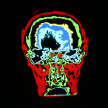How to Buy a Telescope
When it comes to how to buy a telescope, there is more to consider than meets the eye.

So you want a telescope? You've been reading through astronomy websites, ooing and ahhing at those close-up photos of the moon, planes, star clusters, and galaxies. You're researching the pioneers of astronomy and getting ready to explore the wonders they discovered. And what better way to visit these cosmic wonders than with a nice new telescope!
But wait. How carefully have you thought things out? A telescope isn't a toy, and a good one costs a lot of money. You have to decide if you're ready to own a telescope, and what kind it should be. That's going to take some serious thinking. Need help figuring out how to buy a telescope? Let’s look at the questions you should be asking.

Am I ready for a telescope?
To find out, try answering these questions. Can I recognize the major stars and constellations? Do I know how to use a star chart to locate less visible stars, constellations, and sky objects? Have I been interested in astronomy for a long time, or is this just a passing whim? Am I responsible enough to properly use and care for an expensive and fragile instrument like a telescope? Be honest in your responses to these questions. If the answer to any of them is "no," you should probably wait and work on them before buying a telescope. For now, look into a good astronomy book for beginners.
What kind of telescope should I get, and how much will it cost?
Telescopes come in so many shapes and sizes that even an expert may have a hard time deciding which one to buy. The recommended beginner's telescope is a small refractor or reflector that comes with a simple, sturdy mount. By "small," we mean a telescope with a small aperture. The aperture is the diameter of the scope's objective lens (refractors) or primary mirror (reflectors). Look for a refractor with an objective lens between 2 and 2.4" in diameter or a reflector whose mirror is 3 to 4" across. Such a scope will cost at least $90. Some models will run three times that much.
Why a small telescope? For one thing, a small scope is far less expensive than a big one. A pint-sized telescope can still capture plenty of nifty sky objects. You may be unable to decide between a refractor and a reflector. Each has good and bad points. A refractor tends to be easier to use and care for, but it costs more than a reflector of similar aperture. It gives crisper star images, but the objective lens bends incoming light like a prism, causing color distortions. If a refractor has an "achromatic" objective, you'll know it has a second lens that corrects this problem. An achromatic refractor produces outstanding high power views of the moon and planets. The reflecting telescope normally shows a wider area of sky, so it's a natural for "deep-sky" objects like clusters and nebulae.
If money is a problem, there are alternatives. Try looking for a used telescope—after you've read a bit more about where you can find a telescope. You might even consider buying a pair of binoculars. Yes, even binoculars can provide some grand views of the heavens.

Where can I get a telescope?
Knowing where to look is the next important step in figuring out how to buy a telescope. Telescopes can be found in the optical goods section of any large department store. The quality of these scopes isn't always top notch, and the sales clerk may not know the difference between an eyepiece and a focusing knob. Many department stores advertise the "super high power" of their scopes. Don’t fall for it! With small telescopes, magnifications over 100X to 150X usually produce a blurry image. Much more important than magnifying power is the quality of a telescope's optics and mount.
Your best bet is a store that specializes in astronomical items. Here, you'll find a wide variety of telescopes, plus a sales person who knows a lot about how to buy a telescope. Such stores are scarce, however. To find out if one is located near you, search online or pick up a recent issue of Astronomy or Sky and Telescope magazine and look through the ads. If an astronomy shop isn't nearby, you can always order online. Once you have found a website that has a good selection, you can pick out the telescope you want and order it. Be prepared to wait a bit for your telescope to arrive if you go this route.
If you scan through Craigslist, Amazon, or issues of Astronomy or Sky and Telescope, you'll find second-hand telescopes for sale. Sometimes you'll see a telescope being offered for a bargain price at a flea market or yard sale. Purchasing a used telescope can be risky. Unlike the telescope you get from a department store or astronomy shop, a used telescope doesn't always come with a money-back guarantee should it fail to work properly. You'd be wise to seek the advice of an expert before picking up a used scope.
How do I check a telescope to see if it's any good?
Begin with the mount. Is it reasonably sturdy or does it wobble a lot? Does the tube remain rigid when locked in place? The finest optics are useless if a telescope can't aim steadily.
Next, check the optics. Look for noticeable scratches on the objective lens or mirror—especially if it's a used scope. If you're testing a reflector, have someone check the mirror alignment.
The last step is to put the telescope through a workout. View distant land objects during the day to be sure you can get a good focus. Sky objects require an extra sharp focus. Try viewing a bright star. If it focuses to a sharp pinpoint of light, the optics are in good shape.
Will I need accessories for my telescope?
Even if you actively stargaze for the next 50 years, you'll never be able to purchase and use all the astronomical gadgets and gizmos available on the market. From eyepieces to astrophotography equipment to computerized drives, there's an accessory to serve almost any purpose you can imagine.
Your best bet as a beginner is to keep it simple. Eyepieces are the most common telescope accessory. You'll need just two—one for low power, wide-field views, and another for high magnifications.
An accessory that's often overlooked is the finderscope—a miniature telescope mounted on the tube of the main scope. It acts like the scope on a rifle to let you know where you're aiming. Most good telescopes come with finderscopes and two or three eyepieces, so you won't have to buy anything extra.
How much care will my telescope need?
A telescope thrives on tender loving care. It doesn't like to be forgotten in the bottom of the toy chest. Dust or fingerprints on lenses or mirrors blur its vision. And it hates being dragged outside to the sandbox by someone's little ones!
Most telescopes come with a user's manual, which includes care instructions. Read them before using your new scope. As a general rule, remember two things—avoid touching lenses or mirrors and always store your telescope in a cool, dry place (out of the reach of pets or small children) when not in use. Do this, and your telescope will reward you with years of faithful service.
What can I see with a telescope?
A telescope opens up whole new worlds, from a bee on a flower in your backyard to a galaxy millions of light years away. With even the smallest telescope, you'll see craters on the moon, Saturn's rings, and a mind-boggling array of "deep-sky" objects.
There will be disappointments. Stars are so far away that they continue to look like points of light (only brighter) in even the biggest telescopes. Galaxies and nebulae will appear as faint blobs of light. Those spectacular photos of objects like the Andromeda Galaxy and the Orion Nebula are made with cameras that collect and store light much better than your eyes can. Still, the heavens are a treasure trove of beautiful and mysterious small-telescope sights.
If you are still set on learning how to buy a telescope, here are some recommendations for refractor or reflector telescopes that you can order online.
Retractor Telescopes
As we discussed above, refractor telescopes have pros and cons. While they deliver crisper images, they also display color distortions, and can cost more than reflector telescopes. If you choose to spend the extra money, here are some options to consider while learning how to buy a telescope.
Celestron's Omni XLT series gives users high quality optics and the stable platform of a CG-4 mount. The telescope presents an image with virtually no spherical aberration, due to the use of aspheric shaping technology in conjunction with hand-figured optics. A StarBright XLT coating system further enhances light transmission.
The Vixen Space Eye 50mm Telescope is extremely mobile, weighing only six pounds. It includes eyepieces, a tripod and a finderscope. The telescope has a light gathering power of 51X.
Reflector Telescopes
Reflector telescopes present a slightly less crisp image but no color distortion. If you opt for a reflector over a refractor telescope, here are some of our top picks.
The StarBright XLT features an internal GPS receiver that automatically downloads the date, time, and location from satellites. The system makes alignment simple, just point the scope at three bright objects. The software package will let your scope be controlled by your personal computer as well. The telescope is perfect for the astrophotographer due to a low-magnification secondary mirror and internal baffling.
The StarBlast 6i IntelliScope is incredibly portable, at only 6" long. With Orion's computerized object location system, even newbies can pinpoint astronomical objects with ease. StarBlast 6i ships with a fully assembled base and weighs a mere 23.5 lbs.
Celestron's PowerSeeker Telescope is extremely portable, with a Newtonian reflector and a Barlow lens that triples the magnifying power of each eyepiece. It includes slow motion controls for smooth tracking, making it ideal for both terrestrial and astronomical use.
About the Creator
Futurism Staff
A team of space cadets making the most out of their time trapped on Earth. Help.






Comments
There are no comments for this story
Be the first to respond and start the conversation.